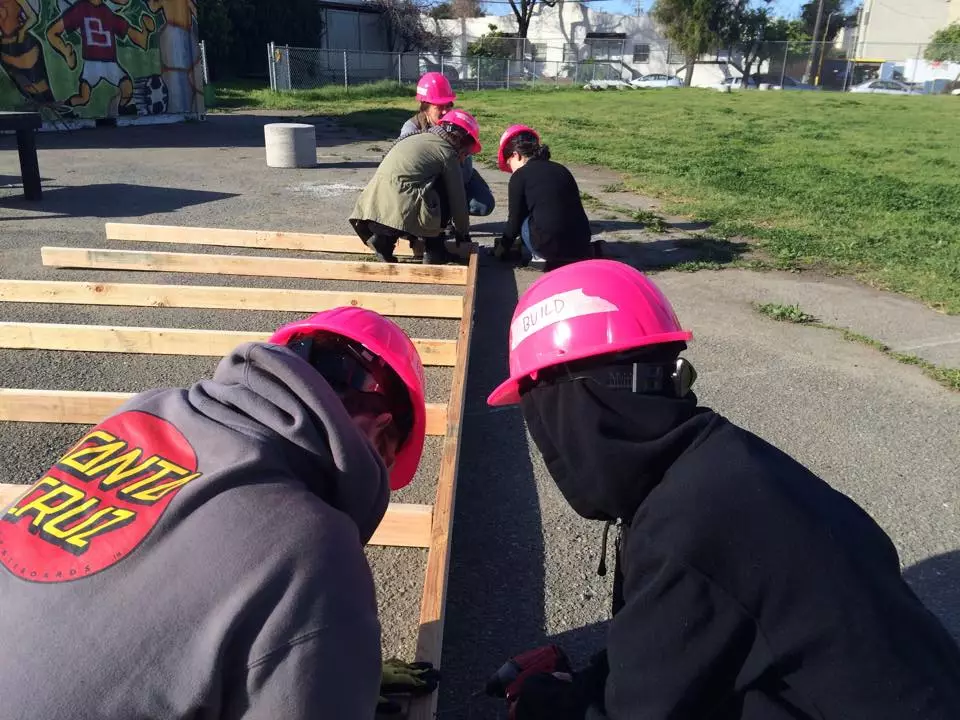For many of us, making something during an extracurricular high school activity probably involved bringing home a papier-mâché head or wonky flower pot to proud parents, but Berkeley, CA high school students constructed a solar-powered tiny house. The unnamed dwelling measures just 9.2 sq m (100 sq ft) and includes a small sleeping and storage area.
The tiny house was created by REALM Charter High School students working under the watchful eye of experienced architects and builders, as part of a youth program by non-profit organization Studio H, which works with kids to teach design, engineering, and architecture skills.
The towable dwelling sits on a 2 x 4.87 m (7 x 16 ft) trailer and weighs around 2,721 kg (6,000 lb). It's very basic, and is perhaps better thought of as a shelter or retreat in its current guise, rather than a fully-featured tiny house, though it shouldn't take too much work to get it to that point.

The interior comprises one space finished in white-painted drywall, with just a small cabinet and a bed with storage space underneath. Though it doesn't sport any electrical or water hookup (nor toilet), it does have solar power in the form of four 250 W panels, and an inverter for low-power devices. There's OSB (oriented strand board) flooring, which has been stained black, and insulation comes in the form of donated Thermafiber. Painted palette wood was used as siding.
The students actually created two identical tiny homes at the same time. Its counterpart was donated to a Eugene, Oregon-based community that provides transitional housing for homeless people. This one is currently up for sale on eBay, with the eventual proceeds going toward funding Studio H's program next year.
Source: Studio H


















